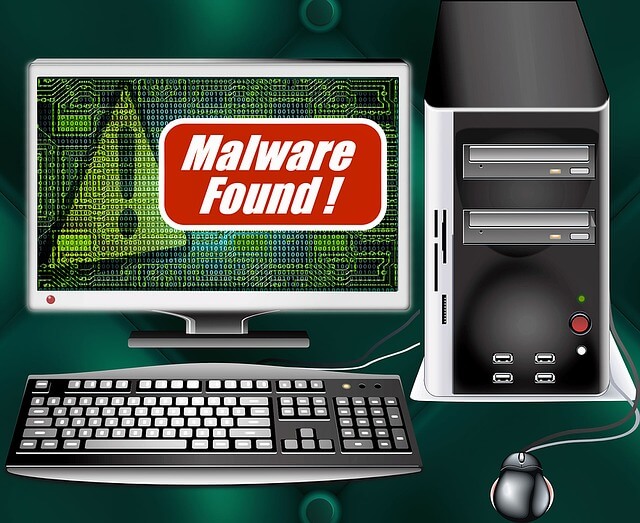What is Malware: History and Different Types
Attackers use malware to make their attack successful without awareness of innocent users. Users who are not aware about Malware, which is an integral part of any cyber attack or hacking action, should go through this piece of information. As the world advances in technology era, the threat to the web world is also arising. There are millions of websites running over the web but one is certain about their complete security status. Every day we hear about website hacking, cyber attacks which results into huge data theft or loss.

Image Credit: Pixabay
What is Malware?
Malware is a shortened form of Malicious Software which is harmful to computer systems and can gain control of systems, steal confidential information and disorder regular server operation. Today malware is formed to earn profit through mandatory advertising, steal data, spread email spam and extort money with ransomware. In current time, evolving malware techniques compel antivirus providers to think beyond traditional tactics.
History of Malware:
If we look at history of malware that is quite interesting and embryonic. The original concept of malware came into exist in around 1974 with the entry of Rabbit virus which can clone itself on single PC and reduce the system performance.
In early 1980’s, virus writers have started to write virus. In 1981, ‘Elk Cloner’ was a written program for Apple-2 system, which was seen as vulnerable due to storing feature of OS on floppy disk and Elk Cloner was viewed as a first large scale computer virus generated in the history.
In1983, Fredrick Cohen named self-replicate computer program as virus because of its feature of infecting other system or modifying other computer system.
In 1986, the virus was developed by Brain especially for PC in order to prove that the PC system is not as secured as people think.
In 1987-88, there were Vienna virus, Lehigh virus (boot sector virus), Jerusalem virus, The SCA Virus, Ping Pong virus, Morris Worm virus were emerged.
In early 1990’s, virus writers have started to show their talents in a more professional way like in illegal or criminal ways.
While in early 2000’s there were ILOVEYOU virus, The Anna Kournikova virus, Beast, Code Red worm were written with social engineering techniques that targeted Microsoft email servers, Microsoft Windows system.
Since 2010, hackers have become sophisticated in designing virus definition and developed Zeus, Zero Access rootkits, Cryptolocker, Keystroke logger, Stuxnet and Regin virus.
Now, take a look at malware types which are listed below:
Different Types of Malware:
1. Viruses
2. Worms
3. Trojan
4. Spyware
5. Zombie
6. Adware
7. Rootkits
8. Backdoors
9. Keylogger
10. Ransomware or any malicious scripts, executable code
1. Viruses:
Virus is a form of malware, which is quite old and can clone itself. Virus writers use stealthy techniques to remain virus unnoticed on the system. The main purpose of virus is to reach among different network hosts. In many cases, file sharing and software sharing spread virus on the system. There are two types of viruses found : Event Driven and In-Built virus. Event driven virus activate via internet channels on receiving command while in-built virus remains silently on the network and works silently.
2. Worm:
The difference between virus and worm is that virus cannot infect other computers at the same time worm can infect other computers easily. Worm can rapidly infect the completely global system and is difficult to detect them. It can destroy data and operating files on the server until the system gets empty. Worm can spread over the network, exploit the vulnerability, and infect the computer.
3. Trojans:
The real meaning of Trojan is to hide itself within software. Trojan especially found in video games, videos, images, illegitimate software packages. The strength of Virus, Trojan and Worm can cause disaster to the system that is also known as Trojan Payload. Once a user downloads the Trojan hidden in software, it can discover financial information over the server, take over PC resources, and even can cause DoS attack.
4. Spyware:
Spyware means a malware that spy on web activities in order to send back advertising (Adware) to your system. This type of malware spreads by virus or Trojans and once a spyware is installed on the victim’s computer, it regularly spies silently of user activities. Spyware can work like key logger to log every keystroke of users and can gather frequent typed login id, password, and other personal information.
5. Zombies:
Zombies remain silently on the computer system and wait for hacker’s order to begin its operation. In DDoS attack, zombies are very useful as they can infect many computers at the same time and sends thousands of requests to deluge the PC network. The owner of zombie computer is unaware that hackers to make a successful DoS attack are using their PC system.
6. Adware:
Adware is a type of software that displays ads on the computer. Adware can inject additional advertising content into other web pages. The main motto of adware is to abuse access to user system and frequently cause unwanted pop-up ads on user’s screen. There are software that serves adware may comes with spyware too that monitors browsing activities and user habits. Many software are freely available that comes with preinstalled adware and spyware that monitor user’s actions to gain monetary advantage.
7. Rootkits:
Rootkits helps malware to remain undetected on computer system, as these are software packages that modifies operating system and makes the malicious process invisible to antivirus products. Many antivirus providers release anti rootkits removal kit to detect rootkits on the system. It doesn’t further allow other malware on the system to gather the information.
8. Backdoors:
Backdoors can bypass normal authentication process. Hackers can install many backdoors once the system is compromised. Trojans, Worms or other methods can be used to install backdoors. With Backdoor, hackers will have an open door in the network connection through which they can enter in other malware or send spam or viruses.
9. Keylogger:
A key logger is a malware that records everything a user types on the keyboard. The motto of key logger is to get login and confidential information (username, password, credit, or debit card number) of users. After receiving the data, the key logger malware sends the data to a malicious server where hackers can analyze the data to pick the required information.
10. Ransomware:
Ransomware can take control of your computer, hijacks user data, and asks for payment to release the system. Most renowned ransomware namely Cryptolocker encrypts the files on the computer and asks for payment to decrypt the files on your computer. In this case, users should regularly backup their files and data. This malware does not harm your PC nor damage any files but it only cause trouble to get money from users. Keep a good antivirus product that can provide a defense layer against ransomware.
Conclusion:
Cybercriminals have become more expert at avoiding identification. In current time, the evolution of mobile technology has also expanded the horizon of hackers and they can easily manipulate user’s PC or mobile device with the above listed malware forms. To keep malware away from your PC system, it is wise to avoid third party installation,update antivirus software regularly, take back up frequently and avoid unknown email attachments.


